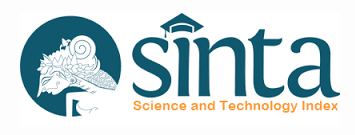PEMANFAATAN VIDEO DALAM BERDAKWAH (STUDI METODE DAKWAH UAS)
Abstract
This study aims to determine the da'wah method of Ustads Abdul Somad (UAS) in preaching and to find out the advantages and disadvantages of UAS in preaching through video and to find out the da'wah models developed by UAS in preaching in video media. The method used is content analysis in videos found on YouTube. The results showed that the UAS da'wah method was the da'wah method of al-hikmah, mauidzah and billati hiya ahsan. The advantages of UAS video lectures are: light lecture material, easy to understand delivery, use of language that is easily understood by all people, light jokes, precise arguments, use of gestures that match what he says, loud, loud and clear voice. firmly with the right intonation and with good rhetoric. the drawback is that the uploaded lecture video does not include a question and answer session, there is no subtitle, the accent is thick with a Sumatran accent, a lot of the videos are cut off. The UAS da'wah model is transformative, actual, culturalReferences
Daftar Pustaka
Abdul Manaf, Jurnal Ilmu Dakwah, Vol. 38, No. 2, Juli–Desember 2018 ISSN 1693-8054.
Wahyu Ilaihi, Manajemen Dakwah, Jakarta: Kencana, 2006
Wahyu Ilaihi, Komunikasi Dakwah, Bandung: PT. Remaja Rosda Karya, 2010
Moh. Ali Aziz, Ilmu Dakwah Jakarta: PT. Kencana, 2009.
Hasanuddin, Hukum dakwah : Tinjauan hokum dakwah dalam berdawak di Indonesia Jakarta ; pedoman ilmu jaya 1996.
Syaiful Rohim, teori mkomunikasi perspektif ragam dan aplikasi Jakarta : Pt rineka cipta 2009.
Ahmad Rohani, Media Instuksional Education Jakarta:Rineka Cipta, 199741
Yarif Bahri dan Aswin Zain, Strategi Belajar Mengajar, Jakarta:Ciputat Press www.Irfandi88. Media Audio Visual.com
Azhar Arsyat, Media Pengajaran Jakarta:Raja Grafindo Persada, 2000
Once an article was published in the journal, the author(s) are:
granted to the journal right licensed under Creative Commons License Attribution that allows others to share the work with an acknowledgment of the work's authorship. permitted to publish their work online in third parties as it can lead to wider dissemination of the work. continue to be the copyright owner and allow the journal to publish the article with the CC BY license receiving a DOI (Digital Object Identifier) of the work.





